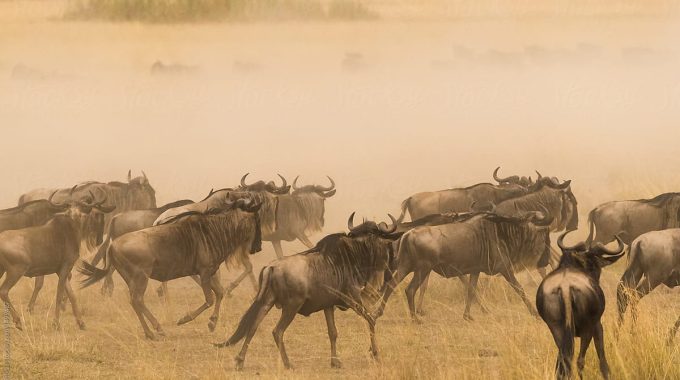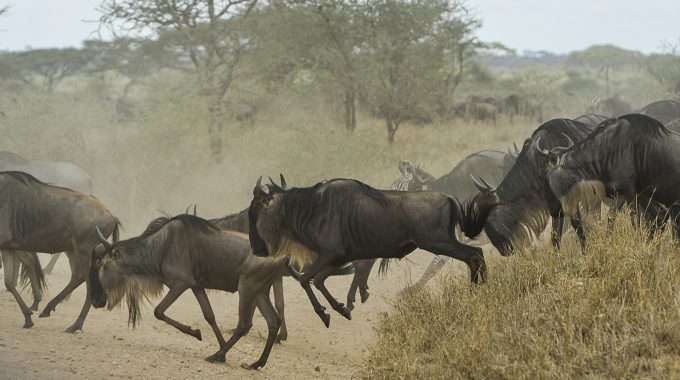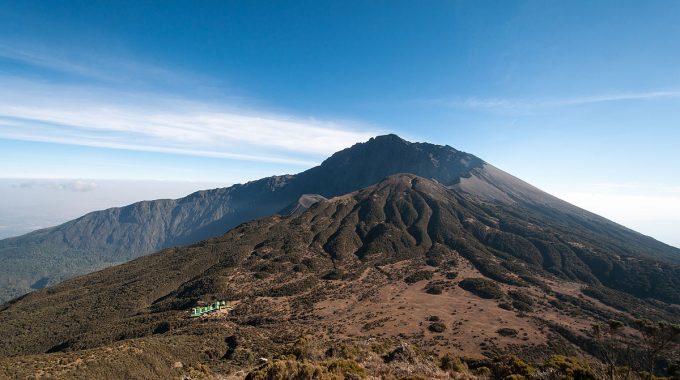How fast can wildebeest run? - The wildebeest, which is also called the gnu, can…
What drives wildebeest to migrate?
What drives wildebeest to migrate? – The migration of wildebeest (connochaetes taurinus), particularly the famous annual Great Migration in East Africa, is driven by a combination of ecological, environmental, and biological factors. This incredible movement, which involves millions of wildebeest (along with zebras, gazelles, and other herbivores), follows a predictable route in the Serengeti-Mara ecosystem, spanning southern Kenya and northern Tanzania. Here’s a detailed breakdown of what drives this massive migration:

1. Food Availability (Grass Growth)
The primary driver of wildebeest migration is the availability of food, which is closely tied to rainfall patterns. Wildebeest are herbivores that primarily feed on grasses, and their migration is a direct response to the seasonal changes in vegetation. The timing and quality of grass growth determine where they move.
- Rainfall Patterns: Wildebeests are highly dependent on the rains, which trigger the growth of fresh, nutritious grass. As the dry season begins, grasses in one region start to wither and lose nutritional value, so the wildebeest move to areas where the rains have been more recent, providing fresh and nutritious forage.
- Grass Growth: The migration follows a cycle of wet and dry seasons. When the short rains (usually around November to December) start in the southern Serengeti, wildebeest begin to migrate northward towards the Maasai Mara. As the long rains (around March to May) fall in the Serengeti, they return southward, following the grass as it grows back in their home range.
2. Breeding and Calving
The migration is also linked to the wildebeest’s reproductive cycle. Since most births take place during a limited time of the year, wildebeest are known to calve in unison. This timing is crucial for the survival of the calves.
- Calving Season: The wildebeest typically arrive in the southern Serengeti and northern Ngorongoro Conservation Area around January, where they give birth. This time of year, when fresh grass is plentiful, helps guarantee that the mothers are fed properly and able to give birth to healthy calves.
- Safety in Numbers: Giving birth in large groups is a survival strategy, as the sheer numbers of newborns can overwhelm predators. The calving season often coincides with the peak of the migration, as it takes advantage of the best grazing and provides safety in numbers for the vulnerable young.
3. Predation Pressure
While not the primary cause of the migration, predation does play a role in shaping the wildebeest’s movement patterns. Predators such as lions, hyenas, crocodiles, and cheetahs often follow the herds, taking advantage of the weakened and vulnerable individuals, particularly during calving season.
- Predator Avoidance: As the wildebeest move to different grazing areas, they may avoid high-predation zones, which can influence their route and timing. However, because the migration follows food and water availability, the herds can’t avoid predators entirely, and predation remains a constant pressure throughout the migration.
4. Environmental Cues
Wildebeest use environmental cues to help them navigate and synchronize their movement. These cues include:
- Seasonal rains: Wildebeest are highly sensitive to seasonal weather patterns and will begin migrating as soon as they detect the onset of rains in a particular area, signaling fresh grass.
- Temperature: The wildebeests also respond to temperature changes, which affect plant growth and water availability. During the hot, dry months, they tend to move towards cooler, wetter areas.
5. Water Availability
In addition to food, water is a key factor in driving wildebeest migration. The animals require water for hydration, particularly during the hot, dry months when waterholes in one area may dry up.
- Movement to Water Sources: As the dry season progresses, wildebeest will move to areas with permanent water sources, often following rivers like the Grumeti and Mara rivers. These rivers also serve as barriers that wildebeest must cross, particularly during the perilous river crossings during the Great Migration.
6. Social Behavior and Herd Instincts
Strong herd instincts aid in the migration of wildebeest, which are highly social animals. Individuals in the animals’ close-knit group structure have a tendency to follow the herd leaders.
- Group Movement: Wildebeest frequently migrate in sizable groups, and the collective behavior influences individual movement. Even though environmental cues are what drive the migration, the herd itself follows instinctive routes that the wildebeest have perfected over generations. In addition to ensuring that no individual animal is left behind, this group cohesion helps shield individuals from predators.
- Leadership and Following: Within the herd, dominant individuals or older members often take the lead. Young and inexperienced animals rely on the herd for direction, which helps maintain the coordinated movement across vast distances.
7. Genetic and Evolutionary Adaptations
The migration is an evolved strategy that has allowed wildebeest to adapt to the seasonal challenges of their environment. It is believed that this migratory behavior developed as a survival strategy to allow them to avoid resource depletion in any one location and exploit various resources at different times of the year.
- Adaptation to Seasonal Changes: The ability to migrate vast distances allows wildebeest to survive in environments that experience dramatic seasonal changes, such as the Serengeti and Maasai Mara ecosystems, where dry and wet seasons create a moving “window” of available resources.
- Evolutionary Success: Wildebeest populations have evolved over millennia to have synchronized breeding cycles, which helps increase the survival rate of calves and ensures that the population remains resilient in the face of environmental fluctuations.
Conclusion
What drives wildebeest to migrate? The wildebeest migration is one of nature’s most spectacular phenomena, driven by a complex interplay of food availability, reproductive cycles, environmental conditions, social behaviors, and evolutionary adaptations. An important aspect of East African ecosystems, this migration is crucial for the survival of wildebeest as well as a variety of other species, such as scavengers and predators. Because of the herds’ intricate seasonal pattern, which is precisely in sync with the rhythm of the African savanna, wildebeest are able to make the most of the natural resources available to them.



